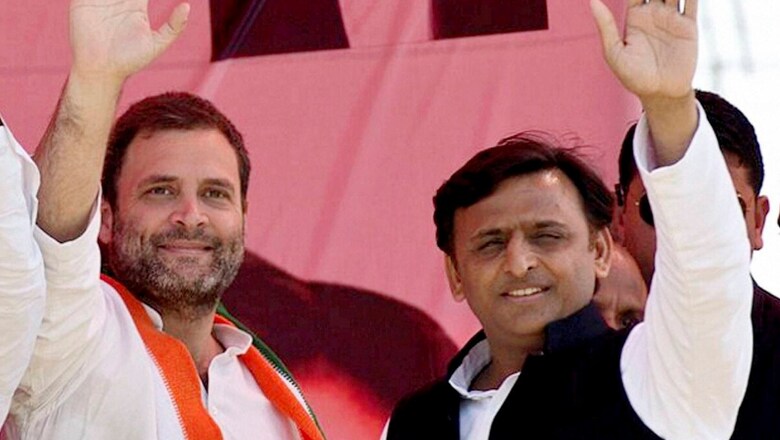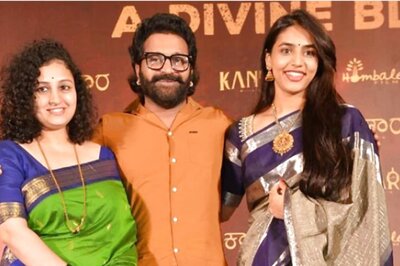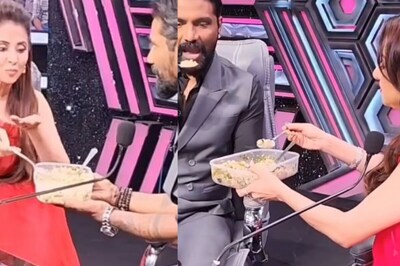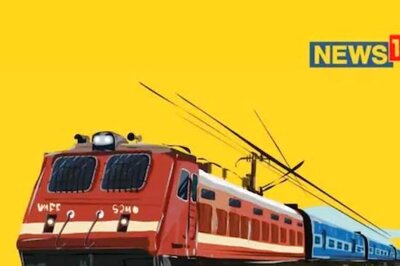
views
The ongoing negotiations between the Congress and the Samajwadi Party in Uttar Pradesh have reached an awkward juncture with the Congress trying to sell the so-called partnership as a ‘done deal’ while the Samajwadi Party believes it to be a dead-end.
In a major development around the highly anticipated alliance for the coming Lok Sabha elections, Congress General Secretary KC Venugopal said the seat-sharing talks between the two parties are in the last stage and a positive announcement can be expected soon.
However, sources in the Samajwadi Party camp say that the Congress-SP partnership talks in UP have neared failure. Reportedly, disagreements over the allocation of three key seats have created a significant obstacle, casting doubt on the future of this political partnership.
This comes hours after SP supremo Akhilesh Yadav said that he won’t be joining Rahul Gandhi’s highly touted ‘Bharat Jodo Nyay Yatra’ unless the seat-sharing talks between them are not finalised. Yadav’s reluctance to join the Yatra until the seat-sharing talks are finalised, further adds to the uncertainty surrounding the alliance.
The contrasting statements by Congress and Samajwadi surrounding this alliance have undoubtedly heightened the intrigue within the political landscape.
If the SP-Congress alliance were to falter, it would undoubtedly have far-reaching implications for the already fragile INDIA bloc which aimed to challenge the Bharatiya Janata Party-led NDA in the upcoming 2024 General Elections.
Congress-SP Alliance Future: What’s the Bone of Contention?
According to sources, the allocation of seats in the crucial constituencies of Bijnor, Amroha, and Sambhal has become a point of contention, leading to an impasse in the talks as neither party is willing to back down.
Furthermore, the recent departure of the Rashtriya Lok Dal, led by Jayant Chaudhary, has further intensified the discord between the Congress and the Samajwadi Party.
Initially, the Congress had requested only 15 seats in Uttar Pradesh when the RLD was part of the INDI alliance. However, with the RLD’s exit, the Congress has revised its demand to 20 seats, while the Samajwadi Party is only willing to give up 17 seats.
Amidst this standoff, the Congress expressed confidence in securing victory in the remaining three seats, while the Samajwadi Party remains steadfast in its reluctance to compromise.
The UP Partnership: Samajwadi Party Alliance vs Solo | Analysis
The political reality that the Congres party needs to come to terms with examples such as West Bengal, Delhi and Punjab is that smaller state parties are doing a better job than the Congress in creating discontent among the masses against the incumbent BJP.
As far as the Samajwadi Party’s graph is concerned, in the 2017 Assembly Polls, the Congress and the ruling Samajwadi Party sealed a ‘UP ke Ladke’ poll alliance in Uttar Pradesh, which today stands as a glaring example of a political catastrophe.
In the 2019 Lok Sabha Elections, the SP when joined forces with BSP and RLD to ally, yet again failed to yield the desired outcome, as the anticipated transfer of votes did not materialize.
An analysis of the vote share between the 2019 Lok Sabha Elections and the 2017 UP Assembly elections reveals a significant surge in the BJP’s vote share by 8%, while the vote shares of the SP, BSP, and RLD, who had formed a pre-poll alliance, experienced a notable decline.
Notably, when Akhilesh Yadav decided to contest independently in the 2022 UP Assembly Elections, the Samajwadi Party achieved its most remarkable performance in terms of vote share in the state, even in the absence of his father, Mulayam Singh Yadav.
Evidently, the Samajwadi Party perceives the Congress as a burdensome entity that hampers its efforts to counter the BJP in the crucial state of Uttar Pradesh. However, it is important to consider that Uttar Pradesh has 80 Lok Sabha seats and the Samajwadi Party doesn’t have enough winnable candidates as well as sources to go solo in all the seats against the saffron camp.
Already a Failure?: INDIA Bloc Falling Like Dominoes
Indeed, the INDIA bloc, a formidable coalition formed by various opposition parties to counter the Bharatiya Janata Party led by Prime Minister Narendra Modi in the 2024 General Elections is currently experiencing a tumultuous period. The alliance has encountered significant setbacks with the departure of key figures such as Nitish Kumar, Mamata Banerjee, and the Aam Aadmi Party (AAP) led by Arvind Kejriwal in Punjab.
The future of the INDIA bloc, which was originally conceived by JDU Chief Nitish Kumar, appears bleak following his withdrawal from the coalition. Despite his instrumental role in forging unity among these opposition parties, the failure of the bloc to acknowledge Nitish Kumar as a potential candidate for the position of Prime Minister is considered one of the contributing factors to his exit.
In a significant political move, Mamata Banerjee decided to sever ties with the Congress in West Bengal for the upcoming Lok Sabha elections.
Similarly, Arvind Kejriwal’s AAP has made a significant announcement, declaring its decision to contest all 13 Lok Sabha seats in Punjab and one in Chandigarh independently. This move effectively signals the end of the INDIA alliance in the state, as the opposition’s unity already seems fractured.
As the Lok Sabha Elections near, it remains to be seen how these events will shape the future trajectory of the opposition.




















Comments
0 comment